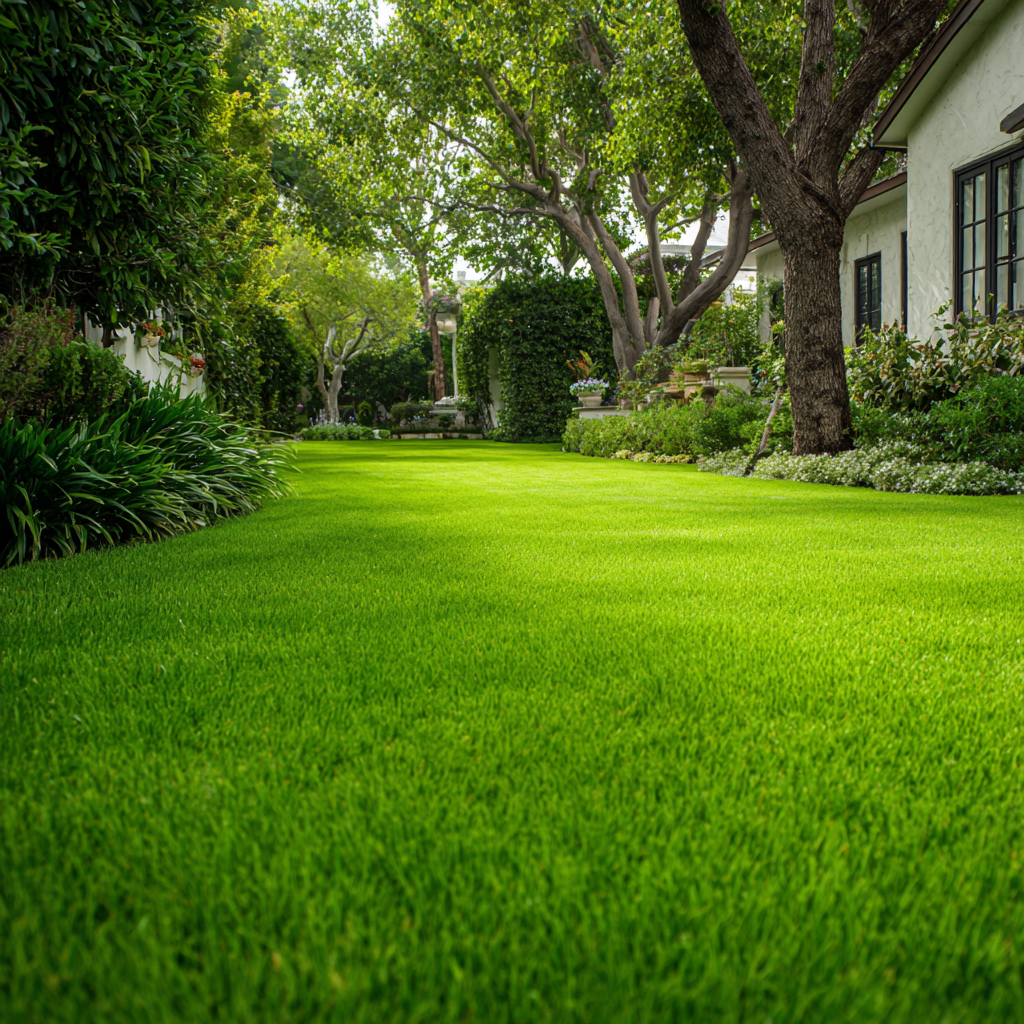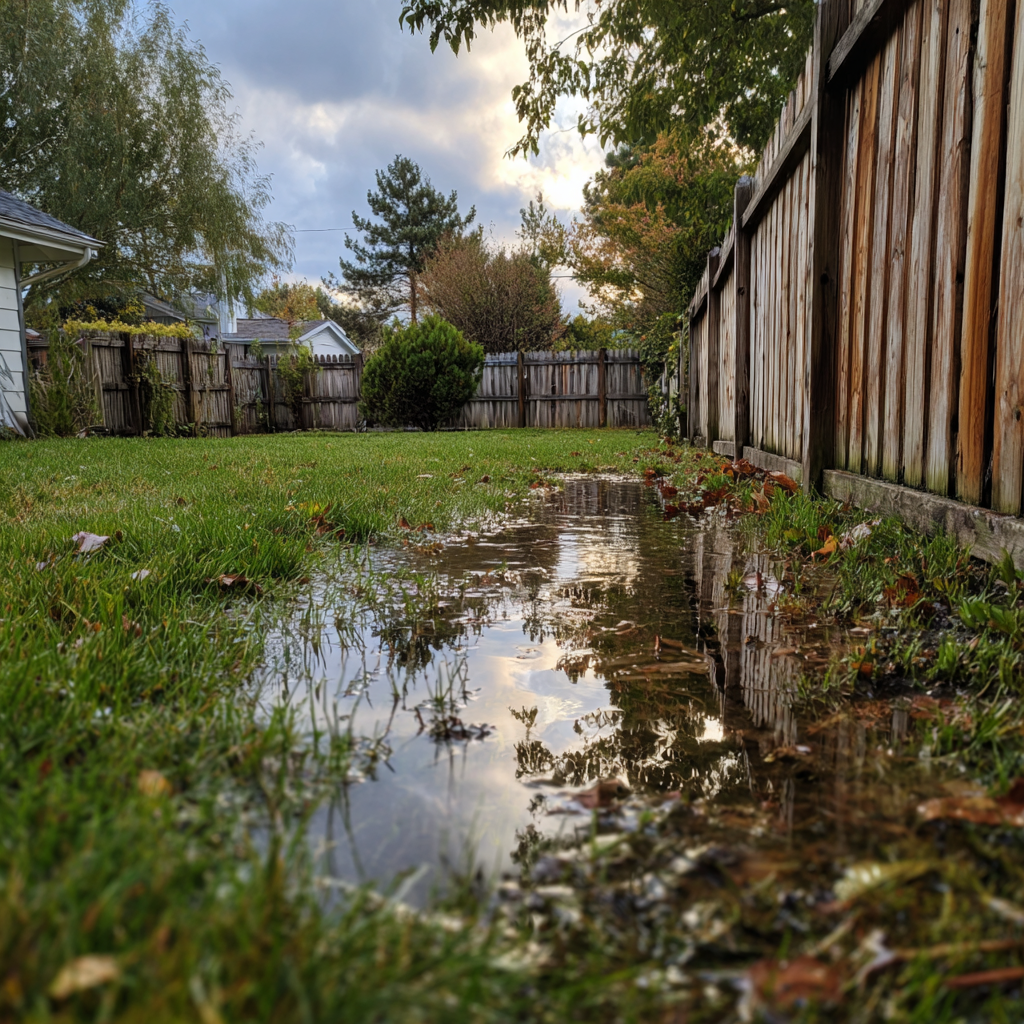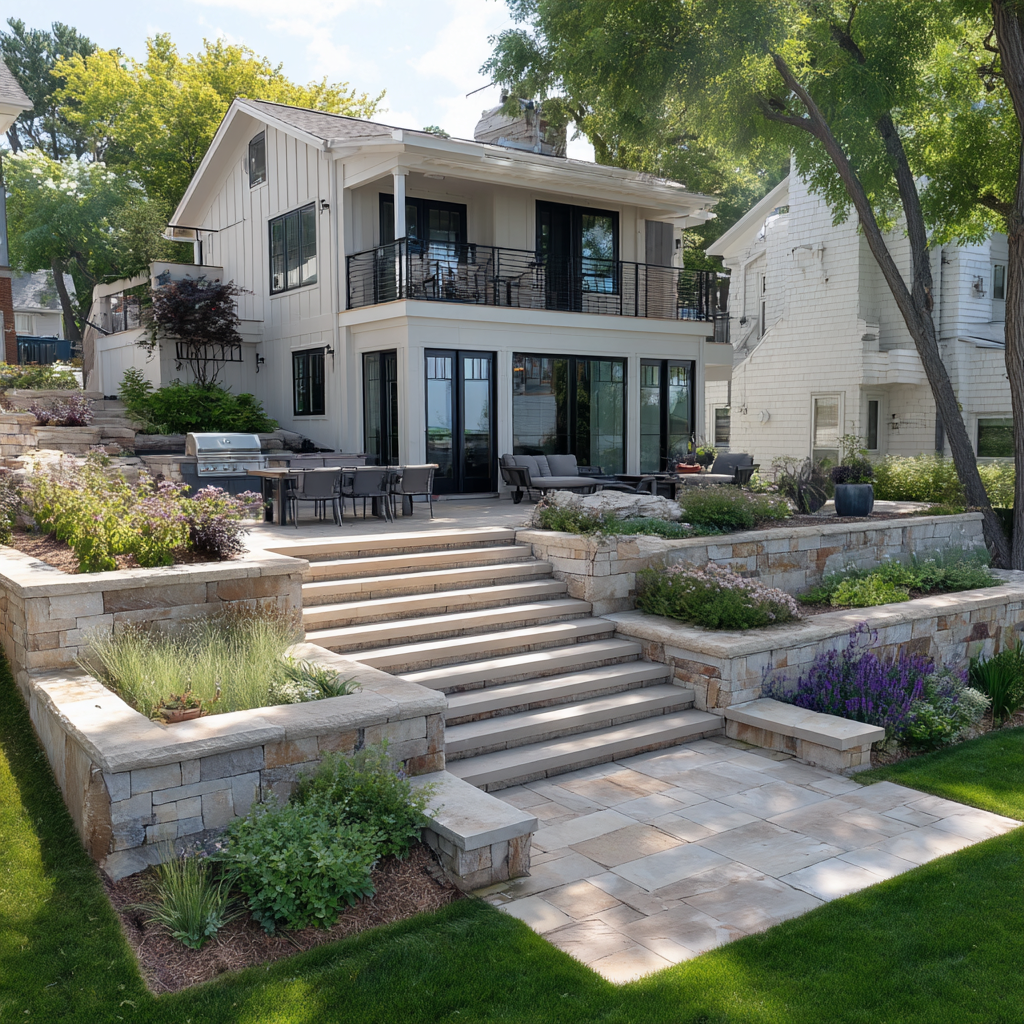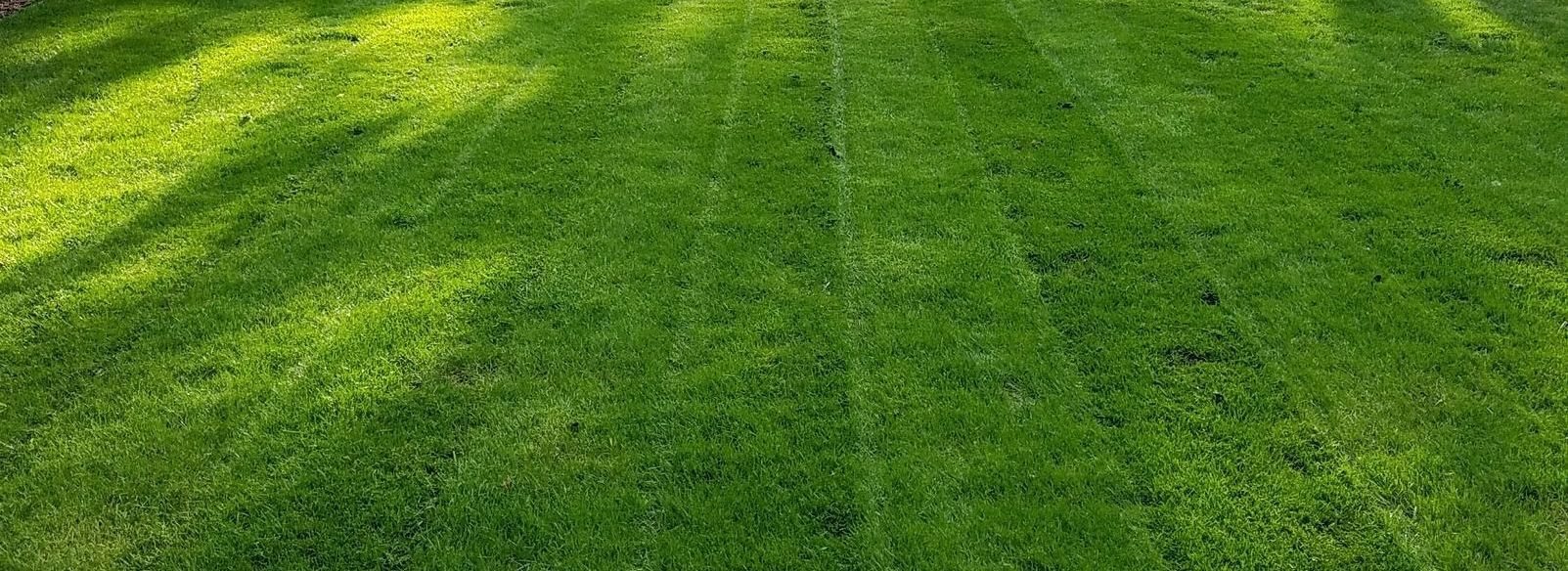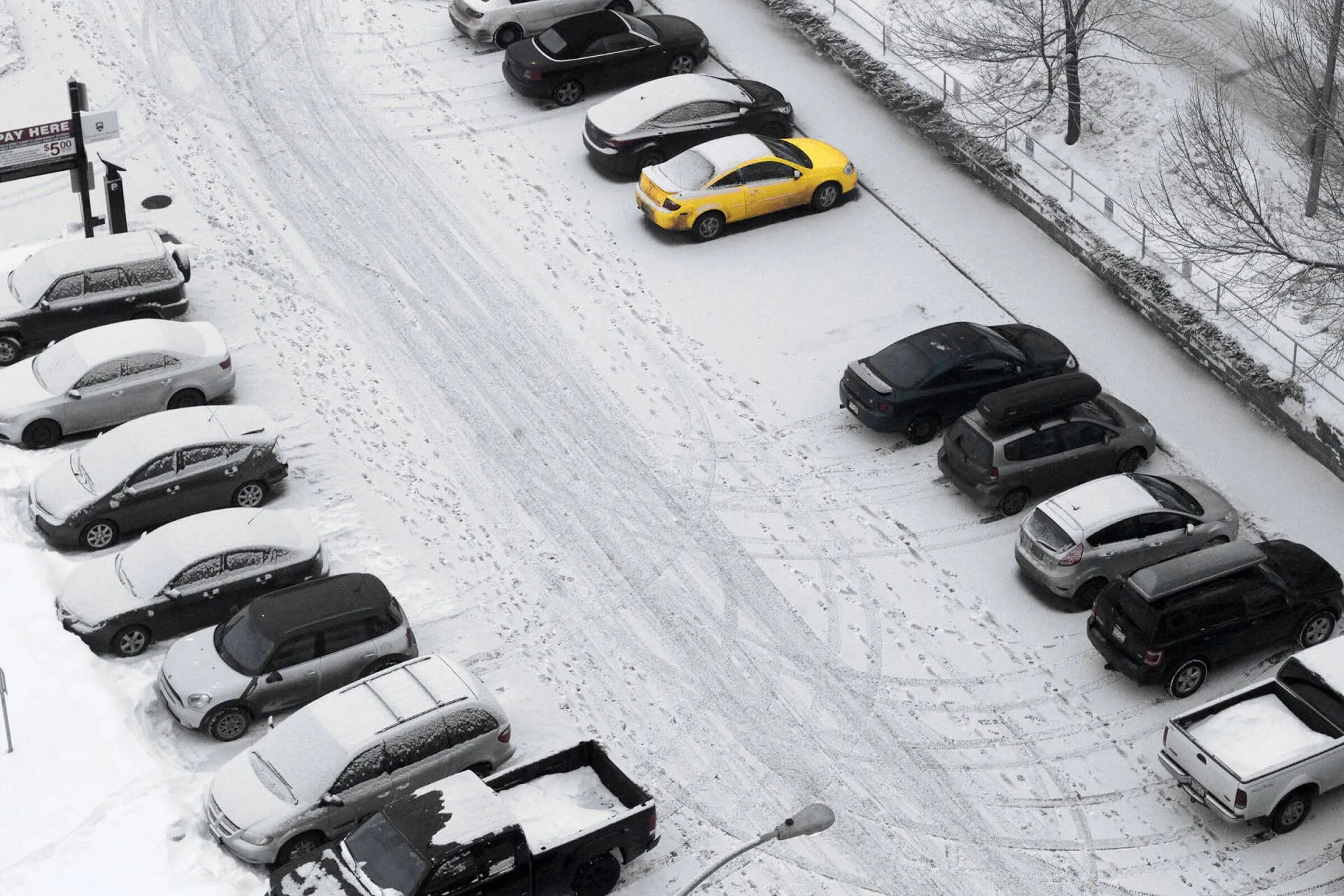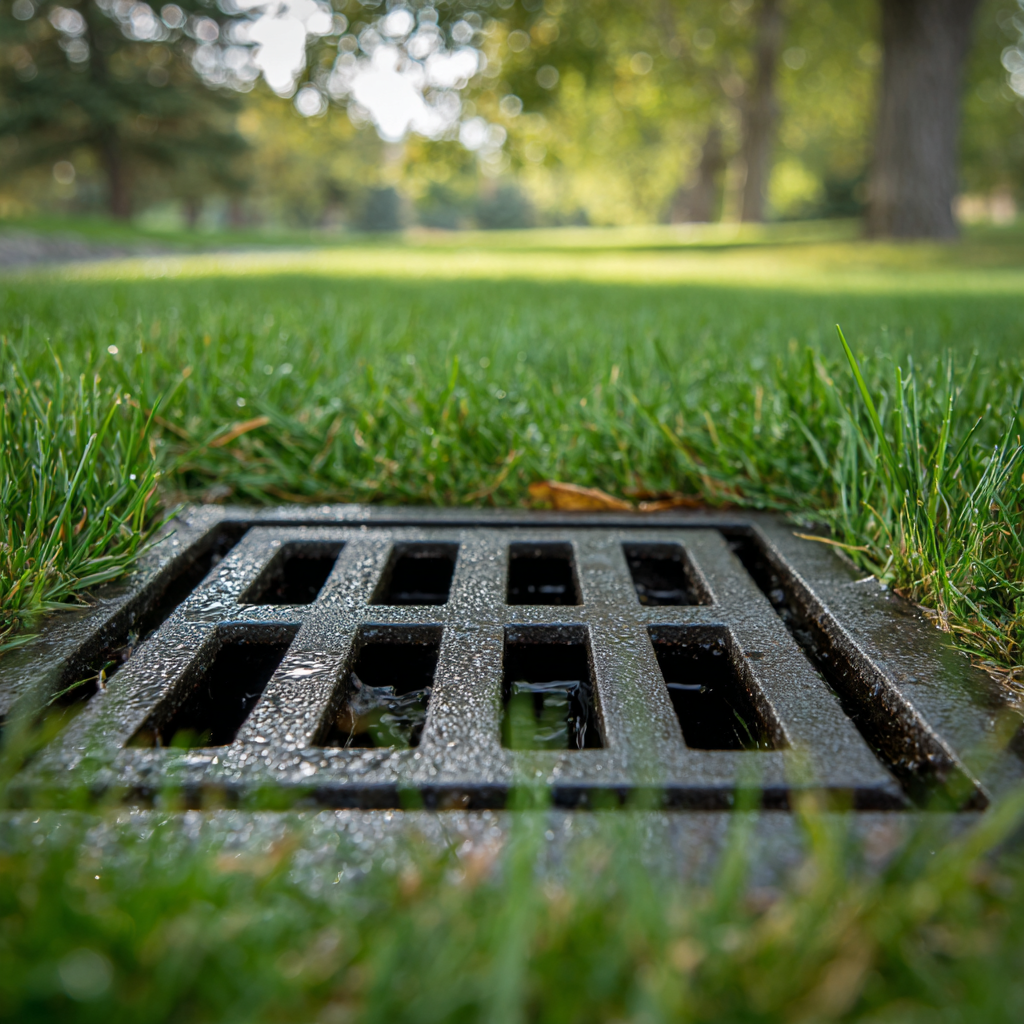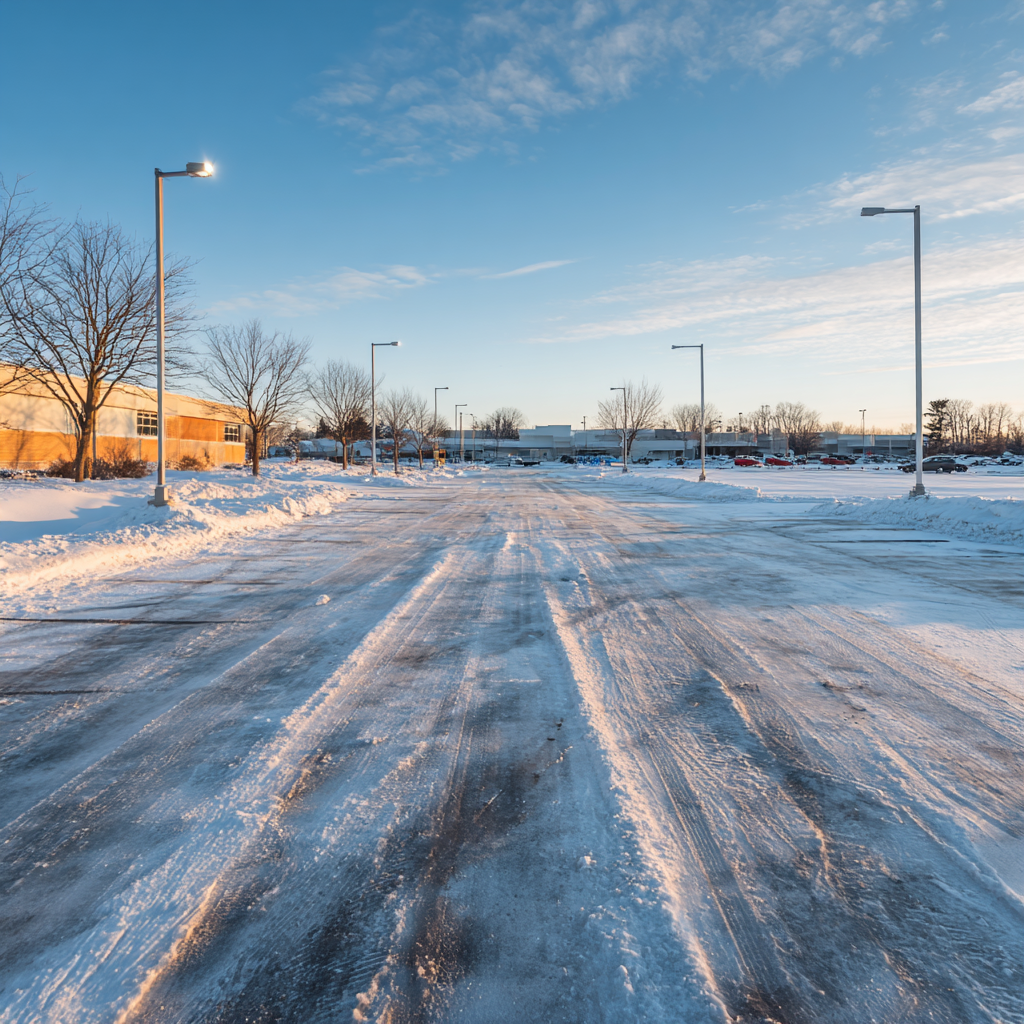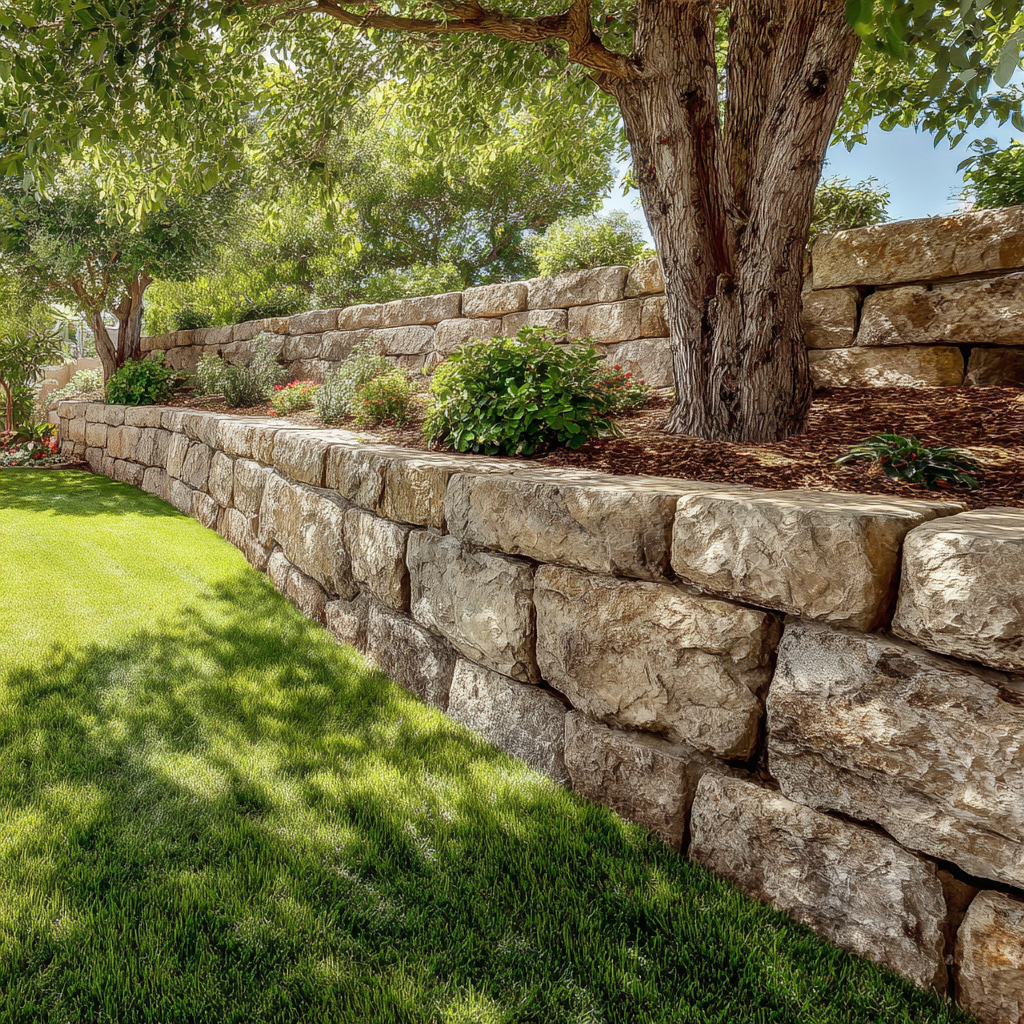Your Maple Grove Drainage System Failed - Here's Why
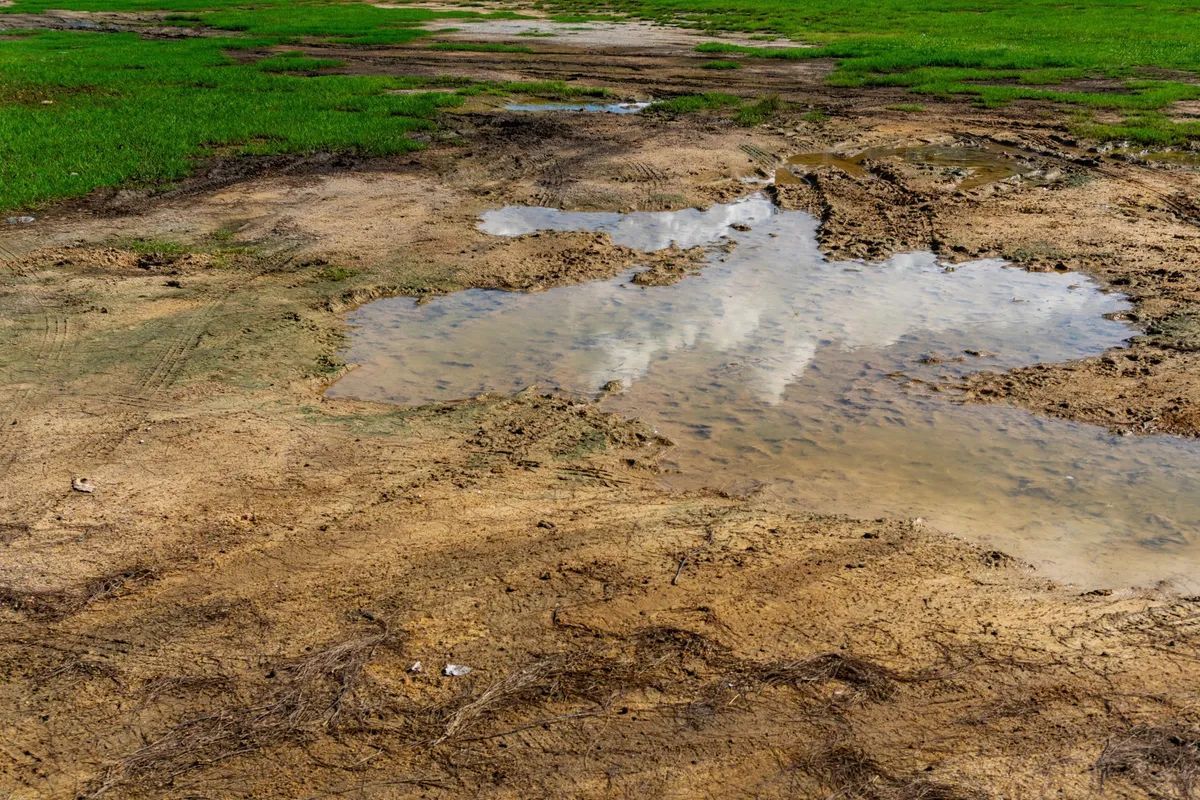
Your Maple Grove Drainage System Failed
You invested in a drainage system to solve water problems on your Maple Grove property. French drains, catch basins, underground downspouts were installed. It worked for a while, then problems came back. Or maybe it never worked properly from the start.
Now water is pooling where it shouldn't. Your yard stays soggy. You're frustrated and don't know if you need repairs or complete replacement. You don't want to waste money on the wrong solution. Based on what we've seen throughout Maple Grove, most drainage failures have identifiable causes. Understanding why your system failed helps determine the right fix.
Why Drainage Systems Fail (And When They Can Be Fixed)
Common failure modes include clogging from debris and sediment accumulation, systems overwhelmed by more water than they were designed to handle, physical damage to pipes or components, poor original design that never functioned properly, settling and grade changes over time, and discharge points that failed or got buried.
Some failures are simple fixes like cleaning or targeted repairs. Some require partial rebuilding of specific sections. Some indicate the system is fundamentally inadequate and needs complete redesign. Professional assessment determines which situation you're facing.
Diagnosis matters because you don't want to replace a system that just needs cleaning. You also don't want to spend money repairing a system that's fundamentally inadequate for your property. Right diagnosis saves money and actually solves your problem. Wrong diagnosis means wasting money without fixing anything.
Sign #1: Water Takes Too Long to Drain
Water eventually goes away but takes hours or days when it used to drain quickly. Puddles linger where they used to disappear fast. The system is clearly still working but not efficiently anymore.
Slow drainage is caused by pipes clogged with sediment, catch basins full of debris, outlet partially blocked, tree roots infiltrating pipes, or sediment buildup in gravel around pipes. This happens over time as systems collect sediment gradually, organic debris accumulates, tree roots grow into pipes seeking moisture, and normal wear occurs without maintenance.
Often this can be fixed through cleaning and maintenance. Jetting pipes to clear sediment, cleaning catch basins, cutting roots from pipes, and performing maintenance that was never done can restore function. Many drainage systems just need maintenance but homeowners think they need complete replacement.
However, slow drainage sometimes indicates bigger problems. If the system was undersized from the start, has too much water for its capacity, or has outlet elevation too high creating poor slope, these require more than just cleaning. Professional assessment determines whether you're dealing with maintenance issue or fundamental design problem.
Sign #2: Area Stays Muddy or Mushy for Days
Soggy areas don't dry out. Muddy spots persist days after rain. Areas even stay mushy without rain due to irrigation running. The problem area that drainage was supposed to fix is still problematic.
This indicates the system isn't intercepting water effectively. The drain may be too shallow for the depth where water is traveling. The drain may not be in the right location for your water source. The system may be completely failed underground. Or the system never worked properly from installation.
Possible causes include drain installed at wrong depth with water traveling below it, wrong location for the actual water source, pipe separated or broken underground, outlet blocked so water backs up, or system never designed properly for your specific problem.
Systems fail to address soggy areas when they didn't intercept water at the depth it travels, were installed in wrong location for the water source, are undersized for water volume, or resulted from poor understanding of where water was coming from. These are often design flaws rather than maintenance issues.
Diagnosis requires determining if the system is functioning at all, checking if water is actually reaching the drain, verifying the outlet is working, and possibly excavating to inspect underground components. Professional assessment determines if this is fixable or needs complete redesign.
Sign #3: Can't Find the Discharge End of Underground Downspout
Your underground downspout was installed to move roof water away from your foundation. You can't locate where water actually comes out. There's no visible discharge at yard edge or street. You don't know if the system is working or where water goes.
This is concerning because the pipe may have separated underground, the discharge may be buried or covered over, water may be dumping somewhere you can't see it, and it could be causing problems you don't realize exist.
Common underground downspout failures include pipe separated at connections, discharge point buried during landscaping work, pipe crushed by vehicles or settling, discharge blocked by debris, or pipe never properly connected from the start.
When discharge fails, water dumps underground near your foundation, creates new problem areas you can't see, defeats the entire purpose of the underground system, and may be causing foundation issues without visible symptoms above ground.
To diagnose this, run water through the downspout during dry weather and watch where water appears if anywhere. You may need to excavate to find the separation point. Camera inspection can locate breaks in the line. Professional diagnosis locates the problem efficiently.
Usually this can be fixed by finding and repairing the separation, reconnecting pipes, clearing blocked discharge, or sometimes rerouting if the original path failed. Generally this is fixable without complete system replacement, but you need to locate where the failure occurred.
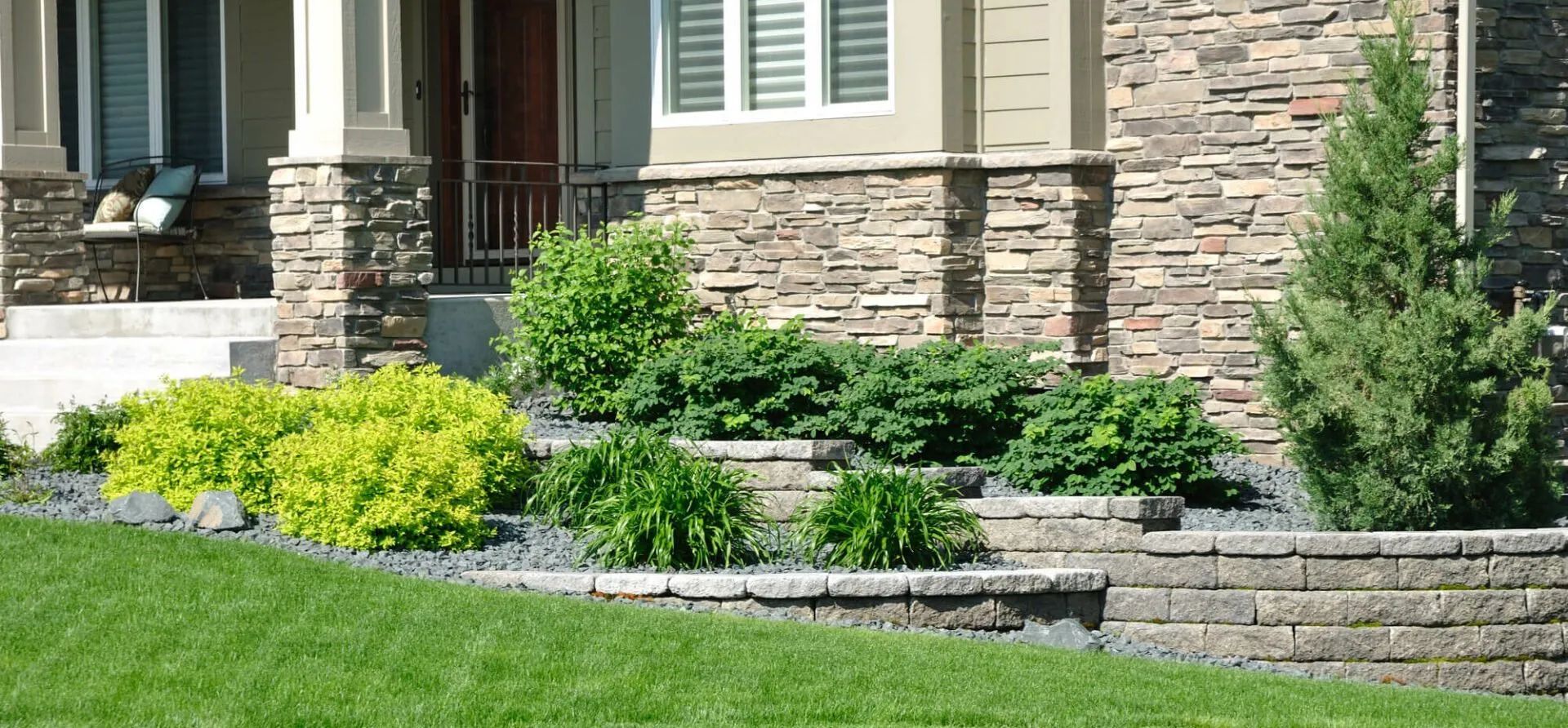
Sign #4: Water Pooling Around Catch Basin
Your catch basin was installed to collect water, but water pools around it instead of draining into it. The basin might be full and not draining. Or water accumulates around the outside of the basin rather than entering it.
This symptom has two very different causes. The basin is clogged and can't accept water. Or the basin is working but can't handle the volume of water being sent to it.
Clogged catch basins are full of leaves, debris, and sediment. The grate is blocked preventing water entry. The outlet pipe from basin is clogged. This is a maintenance issue and usually fixable. Cleaning often solves the problem completely.
Undersized or poorly designed basins are too small for water volume, have inadequate grate area for flow, have pipe from basin that's too small, or are in wrong location for water flow pattern. This is a design flaw and harder to fix than maintenance issues.
To tell the difference, clean the basin completely and run a water test during dry conditions. See if the cleaned basin handles normal flow. If it's still overwhelmed, it's undersized. If it works when clean, it's a maintenance issue.
Fixes depend on the problem. Clogged basin needs cleaning and ongoing maintenance schedule. Undersized basin needs larger basin, additional basins, or complete redesign. Regular maintenance prevents clogging issues. Design problems require professional redesign rather than just cleaning.
Sign #5: System Never Worked Properly from the Start
Drainage was installed but problems persisted. Maybe slight improvement but not solved. The contractor said "give it time" but it's been months or years. You paid for drainage that doesn't actually work.
Systems don't work from installation when they're at wrong depth for water being intercepted, wrong location for water source, undersized for water volume, installed with poor slope or no slope to outlet, have outlet elevation too high, or have fundamental design flaws.
Common installation mistakes include installing yard drainage depth for foundation problem, guessing at location without proper assessment, using inadequate pipe size, not establishing proper slope, having outlet blocked or at wrong elevation, and having no real understanding of water source or flow patterns.
This is different from systems that worked then failed. Maintenance won't fix design problems. Cleaning won't help undersized systems. These need redesign and reinstallation. This is more expensive than maintenance fixes but necessary to actually solve your problem.
What to do requires professional assessment of the existing system to determine why it doesn't work. You may be able to salvage some components. Often it requires significant rework. Better to do it right than keep living with a broken system that cost money but doesn't function.
The Professional Assessment Process
Assessment includes walking your property observing current problems, locating existing drainage components, testing system function by running water through it, excavating to inspect pipes and installation quality, checking slopes and elevations, and determining water sources and flow patterns.
Diagnostic techniques include running water through the system during dry conditions to see what happens, camera inspection of pipes to see inside without excavating everything, excavating at key points to inspect components, checking discharge locations for function, measuring depths and slopes, and comparing what exists to what's needed for effective drainage.
What we're determining is whether the system is functioning at all, whether it's clogged or damaged, whether it's adequate for the problem, whether it was ever designed properly, and whether it can be repaired or needs replacement.
Professional diagnosis matters because you can't see underground without excavation, you need experience to identify design flaws, you need specialized tools to inspect and test, you need knowledge of what should work, and DIY diagnosis often misses the real problem causing failure.
Repair vs. Replace: Making the Right Decision
Repair makes sense when the system functioned properly before, the problem is maintenance-related like clogging, there's physical damage that can be fixed, components are salvageable, and the design was adequate even if execution has issues.
Replacement makes sense when the system never worked properly, there are fundamental design flaws, it's undersized for water volume, it's in wrong location or at wrong depth, there's extensive damage throughout, or repair costs are approaching replacement costs anyway.
Partial replacement scenarios are common. Some sections work while others don't. You can salvage good portions and rebuild problem sections. You can extend undersized systems. This is common middle-ground solution that's more cost-effective than complete replacement while addressing actual problems.
Cost considerations: repairs typically run $500-$2,000, partial replacement runs $2,000-$5,000, complete replacement costs $5,000-$15,000 or more depending on extent of work needed. Professional assessment provides accurate estimates based on what your specific system needs.
Common Maple Grove Drainage Failure Patterns
Maple Grove has heavy clay soils that cause specific drainage issues. Systems clog faster in clay conditions. Sediment from clay soils accumulates. Proper filtration fabric is critical but many older systems lack it entirely.
Tree root infiltration is common with mature trees throughout Maple Grove. Roots seek moisture in drains and can completely fill pipes over time. Systems in areas with trees need root barriers or better pipe materials and regular maintenance.
Settling and grade changes happen over time. Properties settle gradually. Original grades change. Drainage slope can reverse over years. Pipes can sag or separate. This happens so gradually homeowners don't notice until system fails.
Inadequate original installation is common. Many older Maple Grove homes have DIY drainage or contractor work that wasn't professional. We commonly find undersized systems and poor design from lack of proper assessment. These often never worked well from the start.
What Happens If You Ignore Failed Drainage
Foundation problems develop when water sits against your foundation from failed drainage. Basement moisture or flooding occurs. Foundation damage happens over time. These repairs are much more expensive than fixing drainage would have been.
Landscape damage includes soggy areas killing grass and plants, erosion from improper water flow, property becoming unusable, and landscape investment being destroyed by ongoing water problems.
Mosquito breeding happens in standing water from failed drainage. This creates health concerns and major nuisance. Failed drainage creates perfect mosquito breeding conditions throughout summer.
Property value impact is real. Drainage problems are obvious to potential buyers. They reduce property value and may prevent sale entirely. Cost to fix becomes buyer negotiation point reducing your sale price.
Problems get progressively worse. Failed drainage doesn't improve on its own. It gets worse over time. It becomes more expensive to fix as damage accumulates. Better to address issues early than wait until problems multiply.
Preventing Future Drainage Failures
Regular maintenance includes cleaning catch basins annually, inspecting visible components, running water through systems periodically, and clearing discharge areas. This prevents many common failures before they become serious.
Professional inspections every 3-5 years for complex systems, after major landscaping changes, or when problems start developing catch issues before major failures occur. Small investment in inspection prevents large repair costs.
Proper design from the start matters if you're installing new drainage. Professional assessment and design, adequate sizing for your conditions, and quality installation with proper materials prevents "never worked properly" scenarios.
Address issues promptly when you notice drainage slowing or problems developing. Don't wait until complete failure. Early intervention is cheaper than dealing with failure. Small problems become big problems when ignored. Maintenance is cheaper than replacement.
Questions to Ask During Assessment
About your existing system: What components are installed? Can you locate all parts of the system? Is it functioning at all currently? What's the design capacity?
About failure cause: Why isn't it working? Is this maintenance issue or design problem? Can you show me what's wrong? What failed or was inadequate from the start?
About solutions: Can it be repaired or does it need replacement? What specifically needs to be done? What are my options? What do you recommend and why?
About prevention: How do we prevent this from happening again? What maintenance is required going forward? How long should the fixed system last? What's the warranty on repairs or replacement?
Red Flags During Assessment
Contractors who don't inspect your existing system but just want to sell new drainage haven't diagnosed what's wrong with your current system. They may be overselling replacement when repair would work. Professional diagnosis comes before recommending solutions.
Contractors who can't explain why your system failed just say "it's old" or "these fail" without specific diagnosis. Generic recommendations without identifying cause show lack of diagnostic expertise.
Contractors who push complete replacement without considering repair may be maximizing their sale. Good contractors present options honestly. Repair should be considered if viable. You want honesty about what's needed versus what's most profitable for them.
Very low estimates that are significantly cheaper than others may not be addressing the real problem. Quick fixes that won't last aren't bargains. You get what you pay for in drainage work.
Diagnosis Before Action
Your drainage system failed for a specific reason. Understanding why it failed determines whether you need simple maintenance, targeted repairs, partial replacement, or complete redesign. Guessing wastes money on solutions that don't address the actual problem.
Professional assessment identifies failure cause through inspection, testing, and experience with similar systems. This diagnosis determines the most cost-effective solution - whether that's cleaning, repair, or replacement. Don't pay for complete replacement when cleaning would restore function. Don't pay for repairs when the system is fundamentally inadequate.
Signs your drainage system needs professional assessment include water draining too slowly, areas staying soggy for days after rain, inability to find discharge points, water pooling at catch basins, or a system that never worked properly from installation. Any of these indicate problems requiring diagnosis.
The assessment investment is small compared to cost of the wrong solution. Professional diagnosis ensures you spend money fixing the actual problem, not guessing at solutions that may or may not work. We've seen homeowners spend thousands on repairs that didn't help because the real problem was never diagnosed.
Failed drainage gets worse over time, not better. Problems you're experiencing now will be more severe and more expensive to fix next year. The water damage, landscape damage, and foundation risks increase the longer you wait. Professional assessment now prevents more serious problems and higher costs later.
Drainage system not working in Maple Grove? Contact KG Landscape for professional assessment. We'll diagnose why your system failed and recommend the most cost-effective solution - whether that's maintenance, repair, or replacement.
Frequently Asked Questions
How much does it cost to fix a drainage system that stopped working?
Costs range from $500-$2,000 for maintenance and cleaning, $2,000-$5,000 for partial replacement or targeted repairs, to $5,000-$15,000+ for complete system replacement. The specific cost depends on what's actually wrong with your system. Clogged systems just need cleaning at lower cost. Systems with separated pipes need repair at moderate cost. Fundamentally inadequate systems need replacement at higher cost. Professional assessment determines what your system needs and provides accurate estimate. Don't assume you need expensive replacement until diagnosis confirms repair won't work.
Can a clogged French drain be cleaned or does it need replacement?
Clogged French drains can usually be cleaned and restored to function. We use jetting equipment to clear sediment from pipes, clean catch basins, remove debris, and cut roots that have infiltrated. If the system worked properly before clogging, cleaning typically restores full function. However, if the system was undersized from the start or has design flaws, cleaning won't solve the underlying problem. Assessment determines whether clogging is the issue or if problems are more fundamental requiring replacement.
How do I know if my drainage system failure is from clogging or poor design?
Systems that worked well for years then gradually slowed are typically clogged. Systems that never worked properly likely have design flaws. Professional assessment runs water through your system during dry conditions, excavates to inspect components, checks slopes and sizing, and compares what exists to what's needed. We can see if cleaning restores function or if fundamental problems exist. Sometimes combination of both - undersized system that also got clogged. Diagnosis identifies actual cause before recommending solutions so you don't pay for wrong fix.
Why did my drainage system work for years then suddenly fail?
Systems fail over time from gradual sediment accumulation, tree roots growing into pipes, physical damage from settling or vehicles, discharge points getting buried or blocked, and normal wear without maintenance. What seems sudden is usually gradual decline you didn't notice until complete failure. Some failures are actually sudden - pipe separation from settling, discharge blocked by landscaping work, or damage from excavation near the system. Assessment determines whether it's gradual wear requiring maintenance or actual damage requiring repair.
Should I repair or replace my failed drainage system?
Repair makes sense when system worked before and maintenance or targeted fixes will restore function. Replace when system never worked properly, is fundamentally undersized, has extensive damage throughout, or repair costs approach replacement costs. Many situations allow partial replacement - salvaging good sections and rebuilding problem areas. Professional assessment provides honest recommendation based on actual conditions. We've repaired systems homeowners thought needed replacement, saving thousands. We've also recommended replacement for systems that contractors tried repeatedly to repair unsuccessfully. Right answer depends on your specific system condition.
